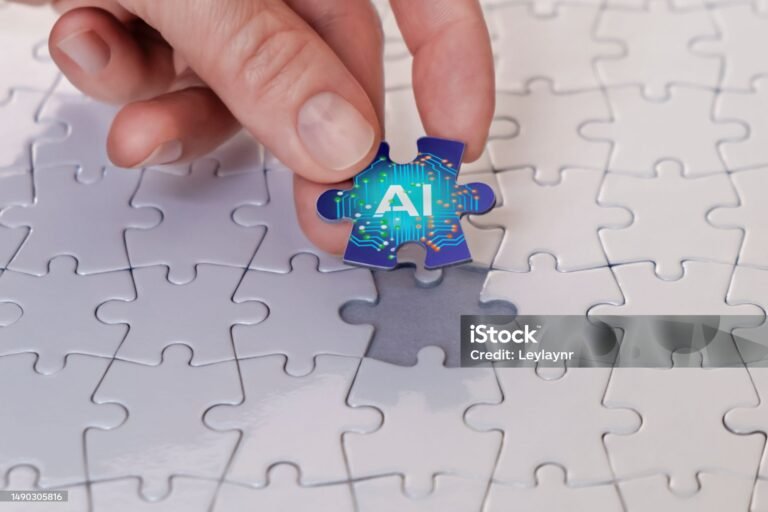Artificial Intelligence (AI) plays a significant role in gaming, enhancing player experiences in various ways:
Non-Player Characters (NPCs) Behavior:
AI governs the behavior of NPCs, making them more realistic and responsive. NPCs can exhibit complex behaviors, adapt to player actions, and provide challenging gameplay experiences.
Procedural Content Generation (PCG):
AI algorithms can generate game content dynamically, including maps, levels, characters, and items. This helps in creating diverse and endless gaming experiences without manual intervention.
Adaptive Difficulty:
AI can adjust the game difficulty based on player skill level or behavior. This ensures that the game remains engaging and challenging for players of all skill levels.
Pathfinding:
AI algorithms help in determining optimal paths for characters and entities within the game environment. This is crucial for games with large, complex maps or those involving navigation through obstacles.
Natural Language Processing (NLP):
In story-driven games, AI can interpret and respond to player input using NLP techniques. This enables more immersive interactions and dialogue options within the game world.
Player Behavior Analysis:
AI systems can analyze player behavior to personalize gaming experiences. This includes recommending content, predicting player preferences, and dynamically adjusting game elements based on player actions.
Virtual Assistants and Game Guides:
AI-powered virtual assistants or in-game guides can provide players with hints, tips, and strategies, enhancing the overall gaming experience and reducing frustration.
Real-time Strategy (RTS) Games:
AI opponents in RTS games use sophisticated algorithms to make strategic decisions, manage resources, and adapt to changing game conditions.
Content Moderation:
In online multiplayer games, AI algorithms can help in detecting and moderating toxic behavior, cheating, and inappropriate content, creating a safer gaming environment for all players.

Emotion AI:
AI can analyze player emotions through facial recognition or biometric data and adjust game dynamics accordingly, creating more personalized and emotionally engaging experience.
* Even in basic games, AI can enhance the player experience and add depth to gameplay. Here are some ways AI can be utilized in simpler games:
Enemy Behavior:
Even in basic shooter or platformer games, AI can control the behavior of enemies, making them move, attack, and react to the player’s actions in more dynamic and challenging ways.
Random Events:
AI algorithms can introduce random events or obstacles into the game environment, keeping gameplay unpredictable and engaging.
Difficulty Adjustment:
In simple arcade-style games, AI can adjust the game difficulty based on the player’s performance, ensuring that the game remains challenging without becoming too frustrating.
Decision-Making:
Even in basic decision-based games, AI can influence the outcomes of choices made by the player, creating branching narratives or different endings based on the player’s actions.
Auto-Generated Content:
AI algorithms can generate simple levels, maps, or puzzles for games like platformers or puzzle games, providing endless replayability without the need for manual level design.

Hint System:
AI can provide hints or suggestions to players struggling with a particular puzzle. The AI could analyze the current state of the puzzle and offer guidance on the next logical steps without outright solving it.
Difficulty Scaling:
AI can dynamically adjust the difficulty of puzzles based on the player’s skill level and progress.
Procedural Puzzle Generation:
AI algorithms can generate new puzzles on-the-fly, ensuring that players have a constant supply of fresh challenges to solve. These puzzles could be tailored to match the player’s preferences and skill level.
Adaptive Puzzle Design:
AI can analyze player interactions and preferences to create puzzles that match their playstyle. For example, if a player enjoys spatial reasoning challenges, the AI could generate puzzles that emphasize this aspect.
Learning from Player Behavior:
AI can observe how players solve puzzles and use this information to improve its hint-giving abilities or generate more engaging puzzles in the future.
Community-Based Challenges:
AI can facilitate community challenges by curating puzzles created by players and recommending them to others based on their skill level and interests.
Dynamic Puzzle Elements:
AI-controlled elements within the puzzle itself can react to the player’s actions, creating dynamic and evolving challenges. For example, blocks might rearrange themselves based on the player’s movements.
Personalized Progress Tracking:
AI can track a player’s progress through the game and recommend puzzles or challenges that align with their current skill level and objectives.
Collaborative Puzzles:
AI can enable multiplayer puzzle experiences where players must work together to solve complex challenges. The AI could adjust the difficulty based on the number and skill levels of the players involved.
Narrative Integration:
AI can weave puzzle-solving mechanics into the game’s narrative, creating a cohesive and immersive experience where puzzle-solving contributes to the overall storyline progression.
These are just a few examples of how AI is transforming the gaming industry, enriching gameplay, and pushing the boundaries of interactive entertainment.



